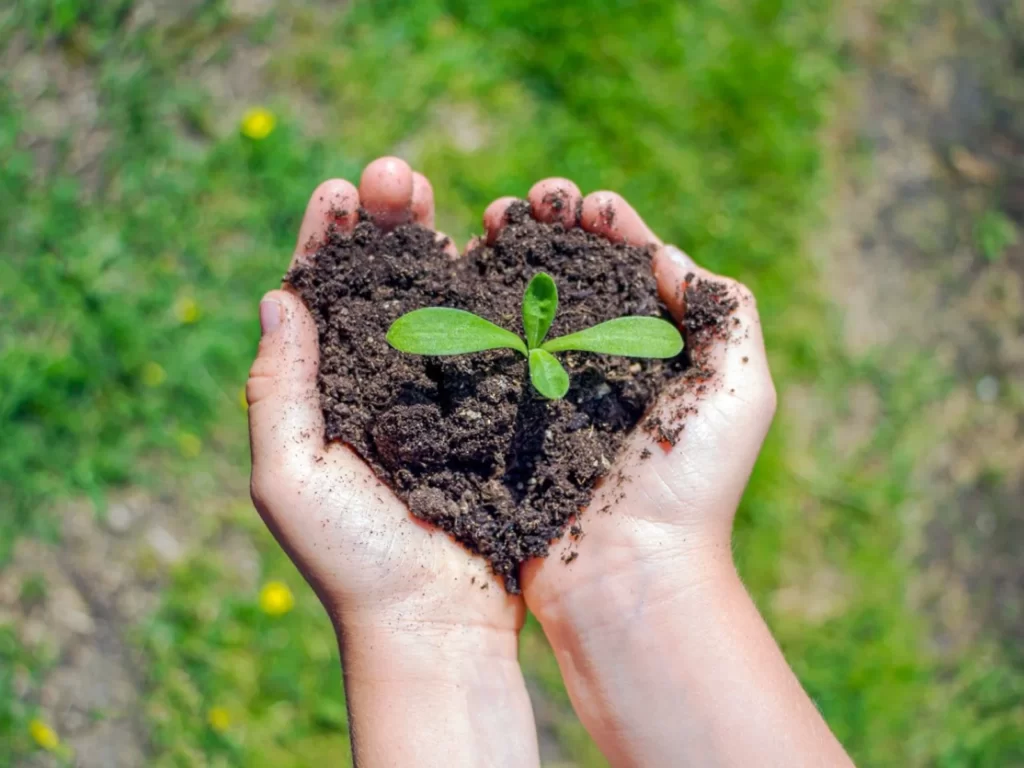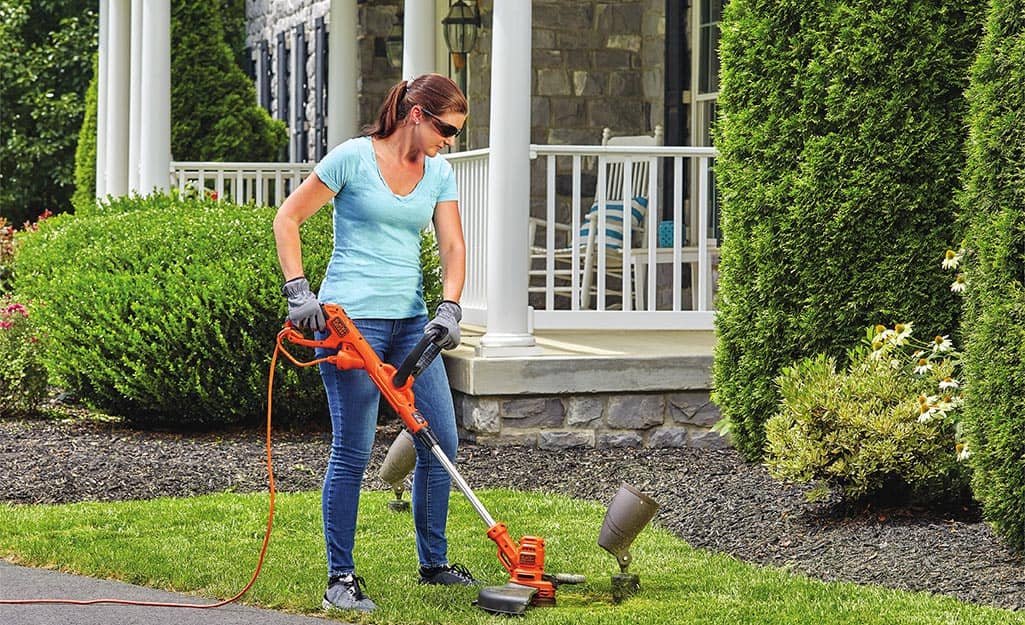Gardening is supposed to be a sustainable activity, but many modern methods aren’t eco-friendly. The excessive use of chemicals, soil degradation and a lack of plant diversity are just a few common mistakes that hurt the environment.
Avoid these issues by implementing these 10 Sustainable Gardening Tips and practices to keep your garden green and healthy. These low-cost or free methods give you even more incentive to grow sustainably and reap a healthy harvest.
Table Of Contents
- 1 Easy Sustainable Gardening Tips & Ideas
- 1.1 1. Take the No-Till Approach
- 1.2 2. Make Your Own Mulch
- 1.3 3. Start a Compost Pile
- 1.4 4. Focus on Native Plant Species
- 1.5 5. Start Growing Your Own Food
- 1.6 6. Save Your Seeds
- 1.7 7. Use Natural Pest Control Methods
- 1.8 8. Avoid Overwatering
- 1.9 9. Collect Rainwater
- 1.10 10. Eliminate Gas-Powered Landscaping Tools
- 2 Have the Most Eco-Friendly Garden in the Neighborhood
Easy Sustainable Gardening Tips & Ideas
1. Take the No-Till Approach
Keeping the soil intact is arguably the best thing you can do to make your garden more sustainable. This planting strategy is called no-till farming in the agricultural industry. When adding new plants, you deposit the seedlings into small holes instead of churning up your soil. This adjustment can significantly reduce your garden’s emissions.

People who regularly plough their fields and gardens unlock soil organic carbon (SOC) that’s released into the atmosphere. Excessive cultivation is one of the greatest contributors to farming-related emissions. A no-till organic gardening strategy will reduce your labour and make your garden more eco-friendly.
2. Make Your Own Mulch
Mulch is a crucial part of garden maintenance. It protects your plants from cold temperatures by trapping heat and moisture in the soil when the ground starts to freeze. However, bagged store-bought mulch often contains hazardous chemicals, including methanol, ammonia and hydrogen sulfide. Try making your own mulch with these organic ingredients instead:
- Shredded bark
- Shredded leaves
- Wood chips
- Pine needles
- Grass clippings
These ingredients are naturally resilient to bad weather, unlike synthetic mulch. They’ll do a much better job protecting your plants without the extra chemicals. This is one of the most important sustainable gardening tips you can follow.
3. Start a Compost Pile
It would help if you also started your own compost pile instead of using chemical fertilizers. There is a common misconception that mulch and compost are the same but play very different roles. Mulch is a protective layer for moisture retention and temperature regulation. Compost is placed beneath the top layer of soil and provides essential nutrients.
Store-bought compost often has the same problem as bagged mulch — it contains too many herbicidal chemicals. Homemade compost features a much more eco-friendly variety of ingredients:
- Plant stalks
- Eggshells
- Coffee grounds
- Shredded paper
- Fruit and vegetable peels
- Sawdust from untreated wood
A homemade compost pile is sustainable in multiple ways. It gives your garden more nutritional support while reducing foreign chemicals. It also keeps unnecessary items out of landfills and helps you recycle waste instead of throwing it away.
4. Focus on Native Plant Species

Focus on native plant species to help your garden last. Those indigenous to your region are more sustainable because they require less maintenance. They are accustomed to local temperatures, precipitation levels and soil types. Few things are more eco-friendly than a low-maintenance garden.
There is just one thing you need to worry about — animals. Native plants are usually popular food sources for birds and bugs. Some animal activity is normal, but you can’t let your garden develop an infestation or attract an invasive species.
5. Start Growing Your Own Food
Speaking of growing native plants, you should strongly consider starting a food garden. Localized fruit and vegetable plots are key in reducing carbon emissions from commercial food production and transportation. No gas-powered vehicles or plastic packaging is involved. The food goes straight from your garden to the table.
To follow these sustainable gardening tips, Start with easy, low-maintenance fruits and vegetables, such as berries, cabbage and beets. Once you get comfortable with these foods, you can move on to more challenging crops like onions, sweet potatoes, carrots and eggplant.
6. Save Your Seeds
Remember to save healthy and mature seeds for the next growing season each time you harvest your fruits and vegetables in the fall. You can do the same thing with your garden’s most successful flowers. Use the seeds to expand your square footage or give your friends the chance to improve their own gardens.
You can keep the seeds alive through the winter in two main ways. You can put them in pots and grow them indoors or store them in a cool, dry place where they won’t absorb moisture and sprout prematurely. Many people put silica gel packets in their containers to keep the seeds dry.
7. Use Natural Pest Control Methods

Chemical pesticides are some of the least eco-friendly gardening resources you can buy. They might kill insects effectively but can cause many health problems and congenital disabilities if animals accidentally consume them. Fencing is a more effective and sustainable pest control method.
A veggie fence is a great option for smaller-scale gardens. Surround your plants, fruits and vegetables with a wire mesh barrier, and remember to put the mesh a few inches underground so animals can’t dig underneath the fence. This will protect your crops and ensure you’re being kind to the creatures that live nearby.
8. Avoid Overwatering
Minimal water consumption is a hallmark of an eco-friendly garden. You shouldn’t have to water your plants constantly. Your climate’s precipitation levels should be enough to support native species. On the rare occasions that you must do so, use a simple watering can instead of a hose or sprinklers so you can conserve as much as possible.
9. Collect Rainwater
Collecting rainwater is another way to conserve water for your garden. Rain barrels are common features of eco-friendly sustainbale gardens nowadays. You can connect the barrel to your home’s downspouts and collect hundreds of gallons of rainwater during the growing season. This keeps you from using tap water on your plants, which is a major money-saver.
10. Eliminate Gas-Powered Landscaping Tools

You should eliminate all gas-powered landscaping tools and switch to electric or manual alternatives. Everything is available with an electric motor now, including lawnmowers, weed eaters and leaf blowers, and these products work just as effectively as their gas-guzzling counterparts. Cutting out your gas-powered equipment will reduce your gardening-related fossil fuel emissions.
Have the Most Eco-Friendly Garden in the Neighborhood
Keeping a sustainable garden is harder than ever with the many sources of emissions around today, including chemical pesticides, gas-powered equipment and irresponsible farming practices. However, putting these 10 tips into action will help you have the most eco-friendly garden in the neighbourhood.
If you have any feedback or point to add to this list, please let us know in the comment section below.








